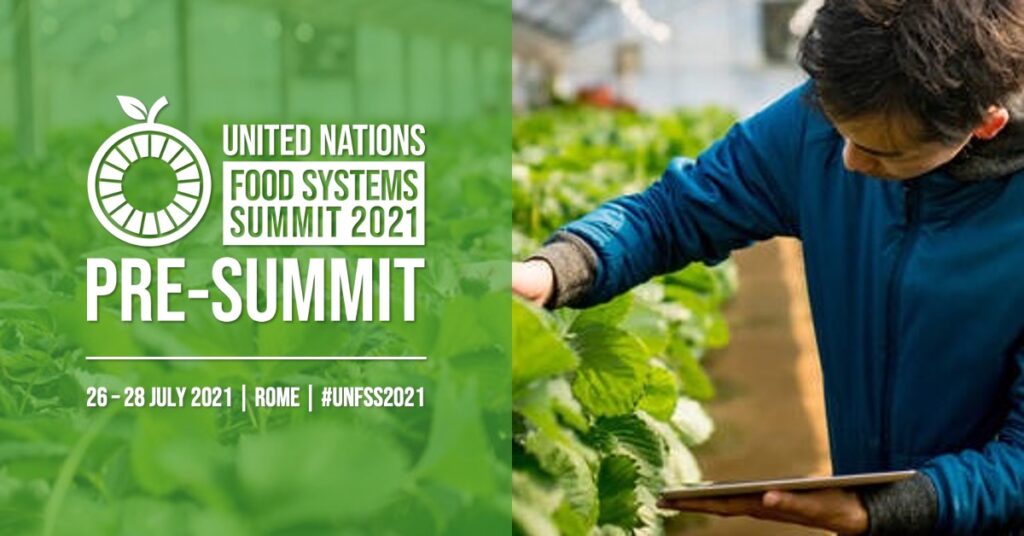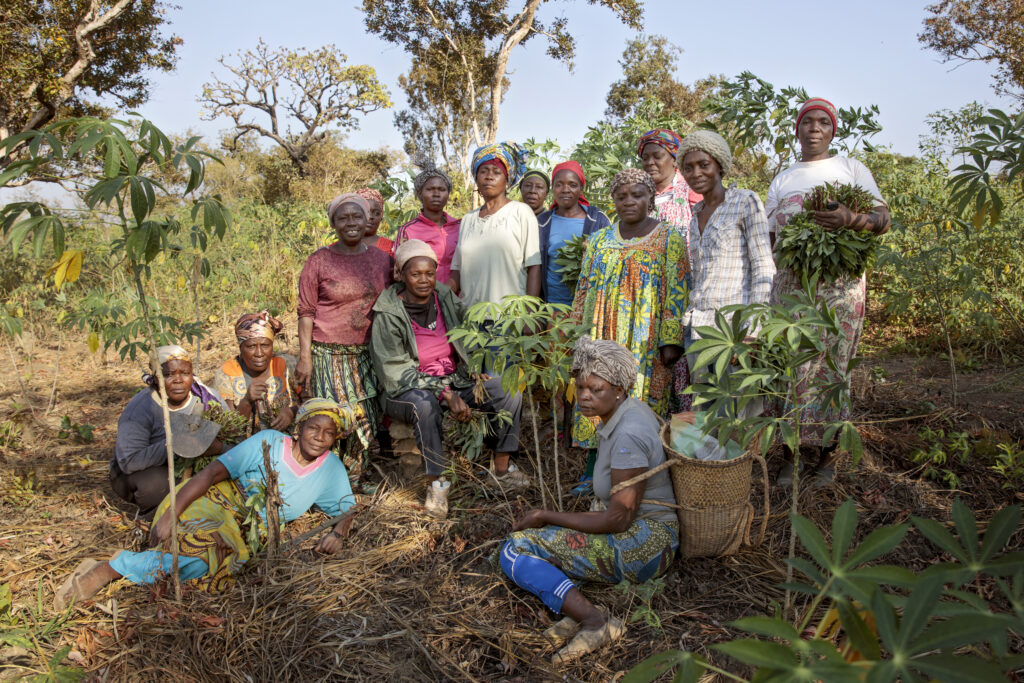Share Twitter Facebook Email Copy URL
Farm workers’ rights must be in the centre of debate
The lockdowns and partial lockdowns in the last one and a half years of the COVID-19 crisis have been accompanied by a worsening of the food crisis in many countries. In regions as diverse as India, South Africa or Germany, it became clear how much agriculture does not only depend on farmers, but also on agricultural workers. Now, in the autumn of the second year of corona, the United Nations will host a “Food Systems Summit” (FSS). The first step will be a “Pre-Summit” in Rome between July 26 and 28.
The aim of the Summit is to make progress with the 17 Sustainable Development Goals. According the its website, it will “awaken the world to the fact that we all must work together to transform the way the world produces, consumes and thinks about food.” The website continues: “The Pre-Summit is a “People’s Summit” that will bring together youth, farmers, indigenous peoples, civil society, researchers, private sector, policy leaders and ministers of agriculture, environment, health, nutrition and finance.”
Is anybody missing at this “peoples summit”? Unfortunately yes! There are basically two social classes that produce our food: The first group are farmers, the second group are agricultural workers. While finance and nutritional experts are mentioned as participants of the “peoples summit”, workers and their trade unions are not. In 2013, the International Labour Organisation (ILO) estimated that of 1.1 billion people working in agriculture, about 40 per cent, or 300 to 500 million people, were employed.

Invisible
The problem in food policy circles is precisely this: there is a lot of engagement in various multistakeholder forums, and there are many ideas about how to “rethink” our food systems. But the class that produces half of the food, agricultural workers and their trade unions, are kept outside of these circles and are ignored in the debates.
Only few countries collect national data on the number of people employed in agriculture. One exception is India, where surveys in 2011 revealed that the incomes of more than 50 percent of rural households depend primarily on short-term forms of wage labour. More commonly, government agencies lack these statistics. In Uganda, for example, national labour statistics indicated that 11 per cent of women in agriculture were in wage employment. In-depth scientific research, however, concluded that this was true for 44.8 per cent of women. There are several reasons for the statistical shortcomings: First, the precariousness of low-income households is characterised precisely by the fact that they have multiple sources of income. It is conceivable, for example, that a household cultivates two hectares of its own land, the sons work on a plantation in another region and the daughters help their neighbours in the fields as day labourers. Secondly, work in agriculture is strongly influenced by seasonal demand. People often work for three months during the harvest period and not for nine months. This is hardly recorded in national labour statistics, often such households are roughly classified as “smallholder”.
Social differentiation
As different as the agricultural structures are in different regions of the world: Wage workers make up a considerable part of the labour force, and their importance is increasing compared to smallholder agriculture. Social structures in rural areas are complex and dynamically evolving all over the world. In many regions that were still dominated by small-scale farming in the mid-20th century, a process of social differentiation has taken place and continues to take place with the penetration of capitalism. This process can be described as follows: Some of the smallholder households that initially cultivate their own piece of land succeed in becoming commercially successful through access to credit and markets. They increase production and hire external labour. A second group of smallholder households keeps their production level stable by being partially integrated into markets. A third, very large group of smallholder households fail to survive economically or lose their land. This group either migrates to the cities in search of wage labour or works on farms and plantations in the surrounding areas. It is important to note that it is by no means only large plantation companies that resort to wage labour. In every smallholder region, be it Southeast Asia or Sub-Saharan Africa, informal agricultural labour markets play a central role. Often smallholders, who are themselves under extreme price pressure, exploit day labourers working for them to a high degree.
Labour rights violations
Rural workers are in a weak position vis-à-vis farmers and plantation owners. In many cases, the number of poor people in rural areas is high, so that there is a potential reserve army of workers to replace the workers who demand their rights. In regions with a tendency of labour shortage in agriculture, for example in Germany, attempts are made to artificially create the reserve army through ever expanding recruitment (Poland – Romania – Ukraine). The following aspects of working conditions are widespread in agriculture:
Low wages: wage levels in agriculture are usually significantly lower than wages in other sectors of the economy. In some countries, agriculture is even explicitly excluded from minimum wage regulations. In many cases, payment is not based on working hours, but on the amount harvested, which forces farmers to work hard in order to receive the agreed wage. Often, incomes are so low that workers and their families suffer from malnutrition.
Lack of health protection: Agriculture is considered the sector where occupational accidents and fatalities are particularly common, especially from pesticide poisoning. Agricultural workers are also particularly affected by heat stress and dehydration due to climate change.
Violation of labour laws: State authorities often find it difficult to monitor compliance with labour standards in remote rural areas. The ILO estimates that only 5 per cent of the world’s farms are covered by labour inspections. Agriculture is the sector in which forms of forced labour and child labour are still particularly widespread worldwide.
Social hierarchies: Labour relations, especially on large plantations, are characterised by extreme social hierarchies. Between privileged foremen and migrant, socially isolated workers on the one hand, and between men and women on the other. Specific forms of discrimination (such as lack of access to sanitary facilities and sexual violence) are a massive problem. If the workers live on the plantation with their families, they are extremely dependent on the management.
Lack of social security: A significant proportion of agricultural workers work seasonally without social security, completely informally or even illegally. In many countries, migrant labour is recruited through forms of hired labour via shady subcontractors.

What should the Food Systems Summit do?
At the Food Systems Summit, discussions will take place along five different “Action Tracks”. Track 4 is called “Advance Equitable Livelihoods”. Probably in this part of the Summits programme, the focus of debate should be the fundamental rights of workers. Instead of a couple of inspirational speeches in TED-talk style, we need a serious debate about why and how workers’ rights are violated at that large scale globally, and what governments should do to improve on workers’ rights. Can the number and quality of labour authorities’ inspections on farms be scaled up? Can we use digital tools in order to improve the work of labour authorities? How are agricultural workers affected by climate change and heat stress? How can trade unions be better supported? What specific support do migrant workers need? What kind of additional policy guidelines need to be in place? For instance, there are key ILO Conventions that should not be ignored at the Summit. Some of the conventions, such as Convention 183 (right to maternity protection) or Convention 184 (health protection in agriculture), are strong instruments that should be used as policy guidelines.
Secondly, the organisations of farm workers themselves – trade unions – must be at the centre of policy debates such as the Food Systems Summit. Agricultural trade unions are quite diverse organisations. They range from non-registered grassroots organisations on individual farms to broadly organised federations at the national level. Unions operate in different political contexts. In repressive contexts, workers may organise on farms in clandestine night meetings. In other cases, unions may be able to use collective bargaining to win better working conditions for all, permanent and seasonal workers alike. Being at the forefront of collective action often involves a high level of personal risk for trade union activists.
Benjamin Luig works as a consultant on international agricultural policies. He ran the Rosa-Luxemburg-Stiftung’s Food Sovereignty Dialogue Programme in Johannesburg, South Africa from 2016 to 2019.



